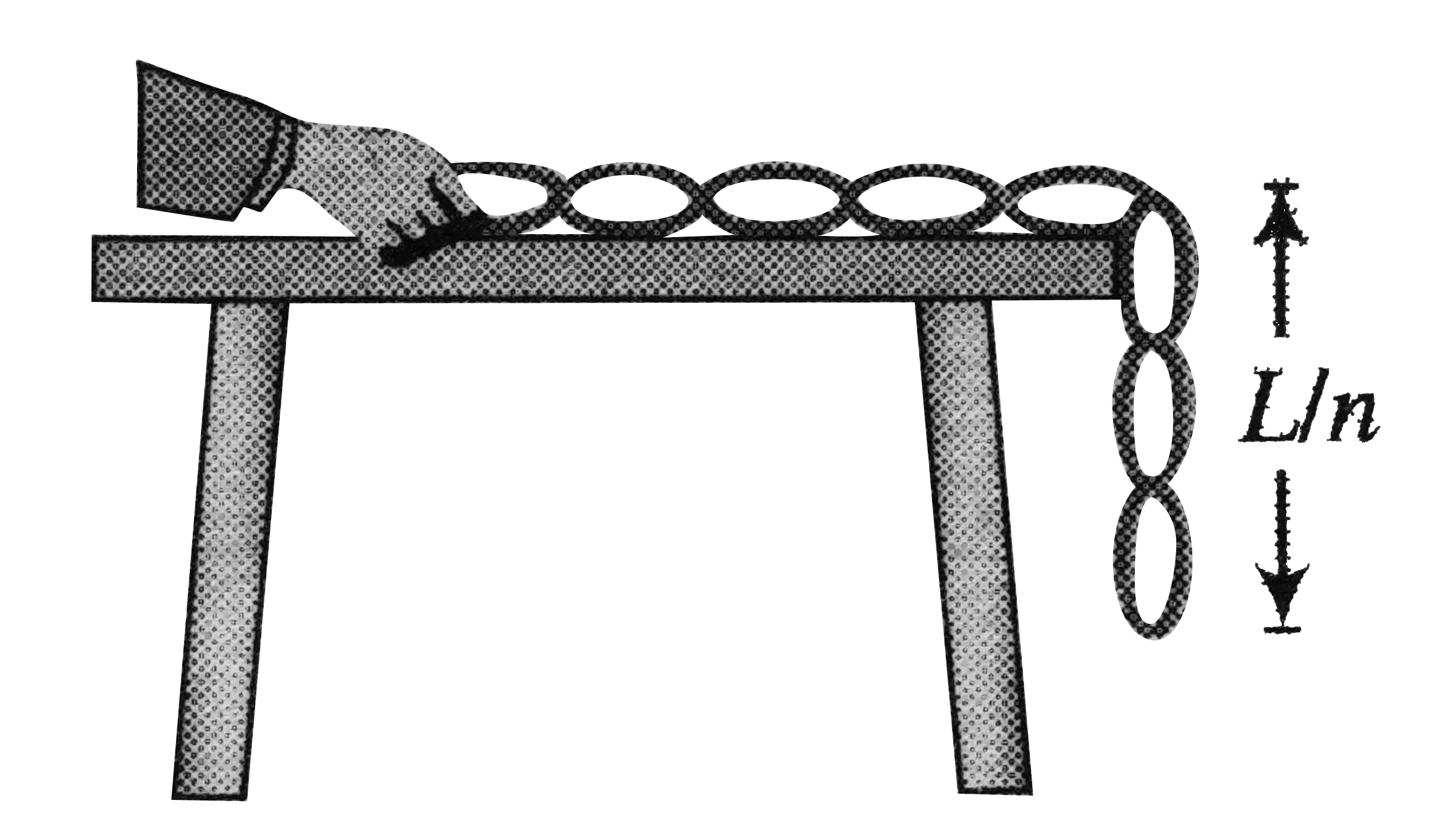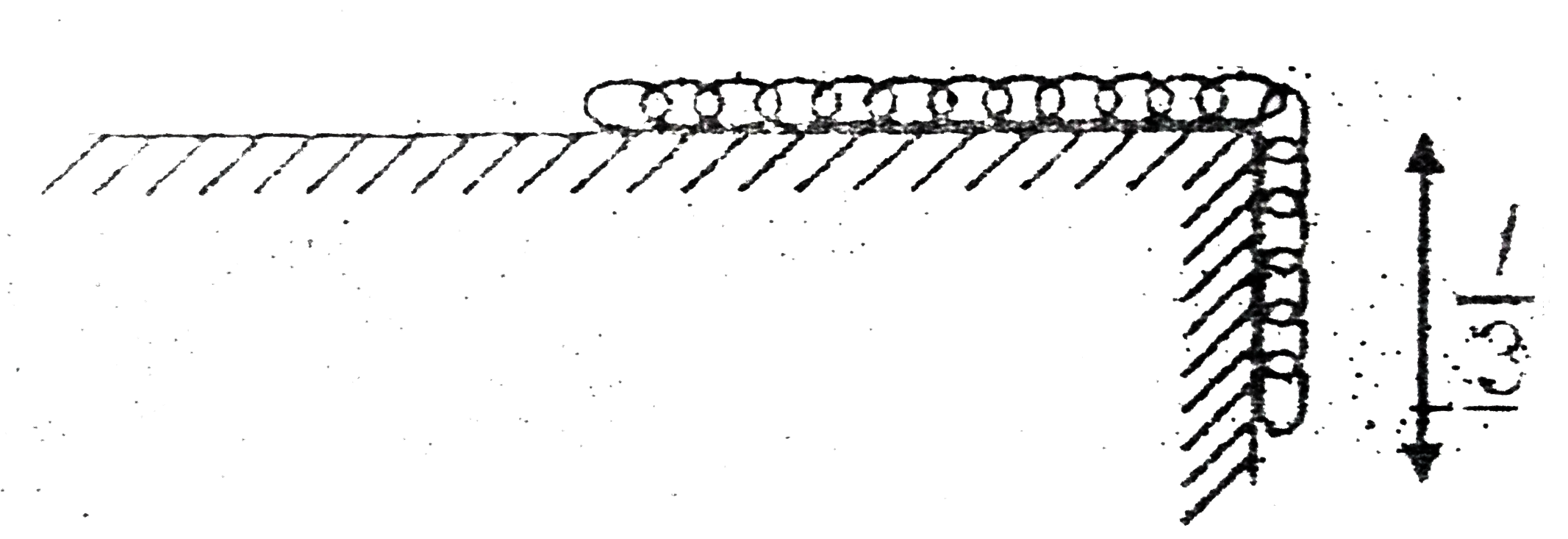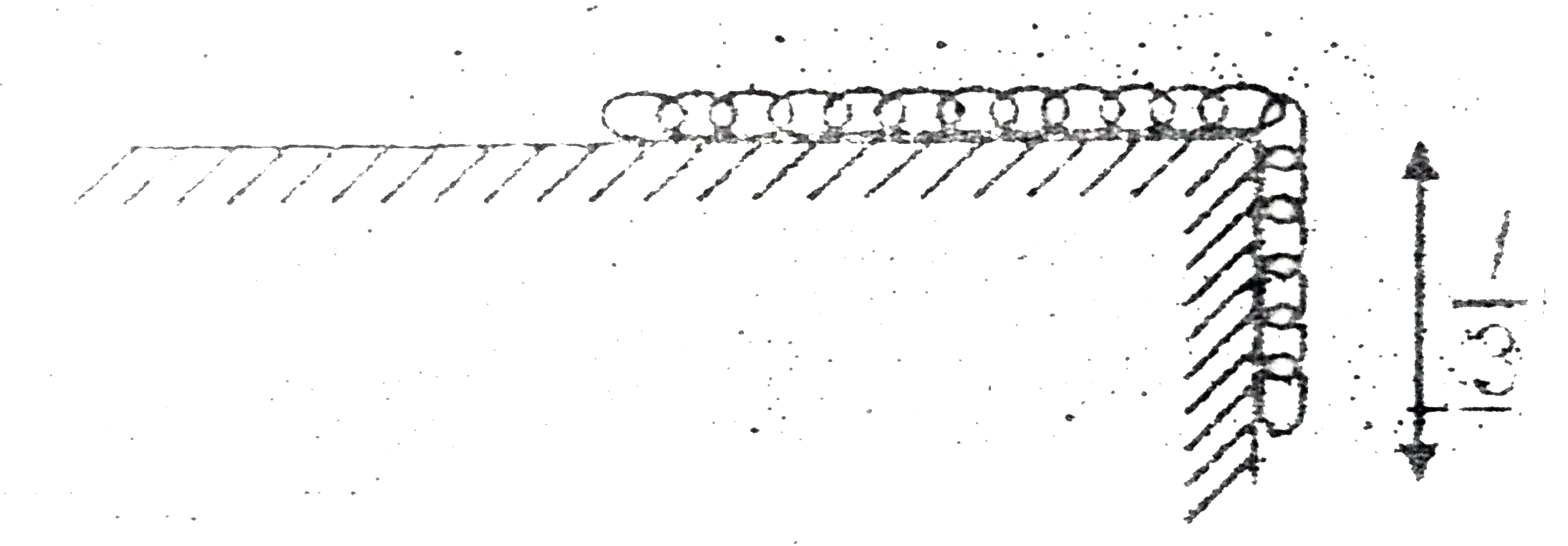A chain of uniform mass m and length L is held on a frictionless table in such a way that its 1nth part is hanging below the edge of table. The work done to pull the hanging part of chain is :−
√n
n
n−3
n−2
The correct Answer is:D
To find the work done to pull the hanging part of the chain back onto the table, we can follow these steps:
1. Identify the Parameters:
- Let the total mass of the chain be m.
- The total length of the chain is L.
- The part of the chain hanging below the edge of the table is Ln.
2. Determine the Mass of the Hanging Part:
- The mass of the hanging part of the chain can be calculated using the ratio of the lengths:
mhanging=mL⋅Ln=mn
3. Find the Center of Mass of the Hanging Part:
- The center of mass of the hanging part (which is a uniform chain) is located at its midpoint. Therefore, the distance from the edge of the table to the center of mass of the hanging part is:
h=L2n
4. Calculate the Initial Potential Energy:
- The potential energy (PE) of the hanging part when it is hanging is given by:
PEinitial=−mhanging⋅g⋅h
Substituting the values:
PEinitial=−(mn)⋅g⋅(L2n)=−mgL2n2
5. Calculate the Final Potential Energy:
- When the entire chain is pulled onto the table, the potential energy of the chain becomes zero:
PEfinal=0
6. Calculate the Work Done:
- The work done to pull the hanging part of the chain is equal to the change in potential energy:
W=PEfinal−PEinitial=0−(−mgL2n2)=mgL2n2
Final Answer:
The work done to pull the hanging part of the chain is:
W=mgL2n2
- Let the total mass of the chain be m.
- The total length of the chain is L.
- The part of the chain hanging below the edge of the table is Ln.
- The mass of the hanging part of the chain can be calculated using the ratio of the lengths:
mhanging=mL⋅Ln=mn
- The center of mass of the hanging part (which is a uniform chain) is located at its midpoint. Therefore, the distance from the edge of the table to the center of mass of the hanging part is:
h=L2n
- The potential energy (PE) of the hanging part when it is hanging is given by:
PEinitial=−mhanging⋅g⋅h
Substituting the values:
PEinitial=−(mn)⋅g⋅(L2n)=−mgL2n2
- When the entire chain is pulled onto the table, the potential energy of the chain becomes zero:
PEfinal=0
- The work done to pull the hanging part of the chain is equal to the change in potential energy:
W=PEfinal−PEinitial=0−(−mgL2n2)=mgL2n2
The work done to pull the hanging part of the chain is:
W=mgL2n2
Topper's Solved these Questions
Similar Questions
A uniform chain of mass M and length L is lying on a frictionless table in such a way that its 1/3 parts is hanging vertically down. The work done in pulling the chain up the table is
View SolutionA uniform cable of mass 'M' and length 'L' is placed on a horizontal surface such that its (1n)th part is hanging below the edge of the cable upto the surface, the work done should be :
View SolutionA uniform chain of mass m & length L is kept on a smooth horizontal table such that Lnportion of the chaing hangs from the table. The work dione required to slowly bringsthe chain completely on the table is
View SolutionA chain is held on a frictionless table with 1/n th of its length hanging over the edge. If the chain has a length L and a mass M, how much work is required to pull the hanging part back on the table?
View SolutionA uniform chain of mass 4 kg and length 2 m is kept on table such that 3/10th of the chain hanges freely from the edge of the table. How much work has to be done in pulling the entire chain on the table?
View SolutionA uniform chain of mass m and length l is lying on a horizontal table with one-third of its length hanging over the edge of the table.

If a gentle push is given to hanging end, it will start moving down. What is the change in gravitational potential energy of the chain, as it just leaves the table?View SolutionA uniform chain of length l and mass m is placed on a smooth table with one-fourth of its length hanging over the edge. The work that has to be done to pull the whole chain back onto the table is :
View SolutionA chain of length L and mass M is held on a frictionless table with (1/n)th of its length hanging over the edge. When the chain is released, find the velocity of chain while leaving the table.
 View Solution
View SolutionA uniform chain of mass m and length l is lying on a horizontal table with one-third of its length hanging over the edge of the table.

If the chain is limiting equlibrium, what is the coefficient of friction for the contact between table and chain?View SolutionA uniform chain of mass m and length l is lying on a horizontal table with one-third of its length hanging over the edge of the table.

What is the speed of the chain, when it just loses contact with the table?View Solution

